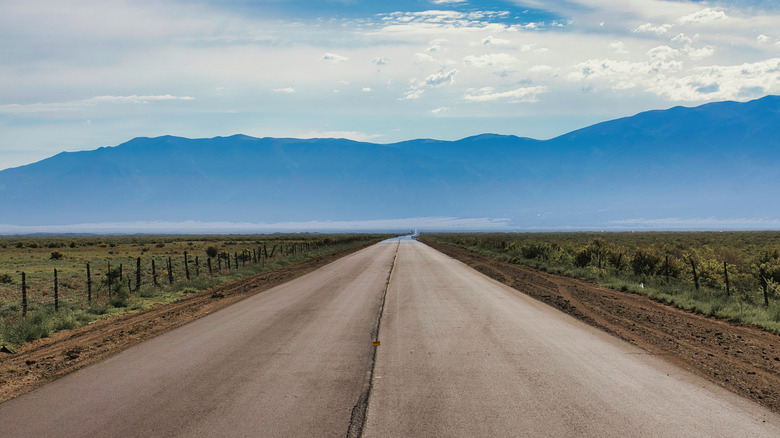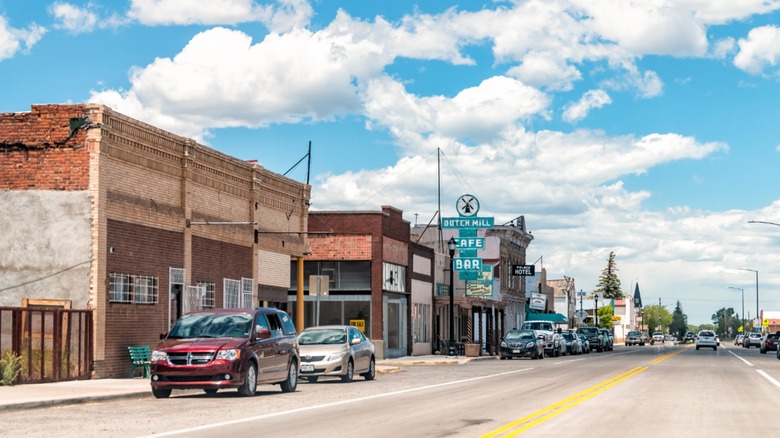
In southeast Colorado lies an ancient mountain valley filled with some of the state's oldest historic sites, which you can visit by cruising a scenic byway that's a must-add to your list of ultimate Colorado destinations. Los Caminos Antiguos Scenic Byway delivers the promise of its name of "the ancient roads" by weaving through a handful of Colorado's towns and monuments dating back to the era of the Spanish conquistadors, the first European colonizers to step foot on the land that would come to be
known as the 38th state. In fact, this byway takes you through towns that predate its statehood.
Spanning 128 miles across the San Luis Valley, Los Caminos Antiguos crosses mountains and passes through a valley filled with towering sand dunes, historic structures, and wetlands filled with thousands of migrating sandhill cranes. It crosses the Rio Grande, too, the 1,900-mile river that begins in Colorado and stretches down into Mexico, which has been a major lifeline for the development of the Indigenous tribes and European settlers living in the area.
The Valley, as it's known by locals, covers a massive 8,000 square miles. It's bordered by three mountain ranges: the Sangre de Cristo, the San Juan, and the Sawatch. All allow visitors to immerse themselves in stunning panoramic mountain views and the wild energy of the landscape. It takes about three hours to drive the byway without stops, but you might want to leave extra time to enjoy sights like the 19th-century fort in Fort Garland and to stroll around the picturesque streets of San Luis, the longest continuously occupied settlement in Colorado.
Read more: The 5 Best Parks Where You Can See Bison Roam (Other Than Yellowstone), According To Visitors
Driving Through History On Los Caminos Antiguos Scenic Byway

Colorado became a state in 1876, but the San Luis Valley reflects a much earlier history. The first Spanish colonizers landed in the valley in 1598 on Juan de Oñate's expedition. Of course, there were already people living in the area; the first were the hunter-gatherer Clovis and Folsom peoples almost 11,000 years ago, and later, there were different tribes, including the Comanche, Apache, and Ute, which is still recognized as the community that has lived in San Luis the longest. While European colonial violence against Indigenous peoples was the standard at the time, Oñate was a particularly brutal presence, leading such violent attacks and retributions against the communities that he was eventually banished from the area and recalled to Spain.
The San Luis Valley was the point of entry to Colorado for the Spaniards, so it's not surprising that the state's oldest settlement, San Luis, is here. Los Caminos Antiguos passes through San Luis, which was established in 1851 by Spanish and Mexican colonists. Other historic sites along the route include Fort Garland, a military outpost built in 1858 when Colorado was still part of New Mexico, to defend the settlers in the area. The sense of authenticity throughout these sites makes them as charming and scenic as some of Colorado's other best-kept historic secrets.
Historic And Natural Sights On The San Luis Valley

The drive on Los Caminos Antiguos typically begins in Alamosa, which was incorporated in 1878 and essentially built overnight when it became a rail center for the Denver and Rio Grande railroad. One day, this town was filled with tents, and the next, entire buildings were transported to it via flatbed cars. Begin at the Alamosa Welcome Center to get information about the area, but don't worry if you don't make it there; markers along the byway offer insight and details on the area.
Besides historic locations, Los Caminos Antiguos brings you close to some of Colorado's most unique sites. The Grand Sand Dunes National Park is just 30 minutes from Alamosa and features the tallest sand dunes in North America, some of which are hundreds of feet high, which adults and kids alike love to surf or sled. It's an ideal place to stop on a Colorado summer road trip, since the seasonal Medano Creek fills with water and offers an otherworldly place to cool off. Conejos is home to Our Lady of Guadalupe, the oldest parish in the state, which was founded in 1858. The structure you see today was built in 1863 and features the original statue brought by Spanish settlers, which guards the entrance of the church.
Antonito is the last of the major towns on the route, where you can take a ride on the Cumbres and Toltec Scenic railroad, which was built in 1880 and crosses the border into Chama, New Mexico. This scenic ride on a vintage steam train offers views of canyons and ridges that no car can access, as it winds its way across the Cumbres Pass.
Ready to discover more hidden gems and expert travel tips? Subscribe to our free newsletter for access to the world's best-kept travel secrets.
Read the original article on Islands.











